Selection sort is a sorting algorithm that selects the smallest element from an unsorted list in each iteration and places that element at the beginning of the unsorted list.
Working of Selection Sort
- Set the first element as
minimum. Select first element as minimum
Select first element as minimum - Compare
minimumwith the second element. If the second element is smaller thanminimum, assign the second element asminimum.
Compareminimumwith the third element. Again, if the third element is smaller, then assignminimumto the third element otherwise do nothing. The process goes on until the last element.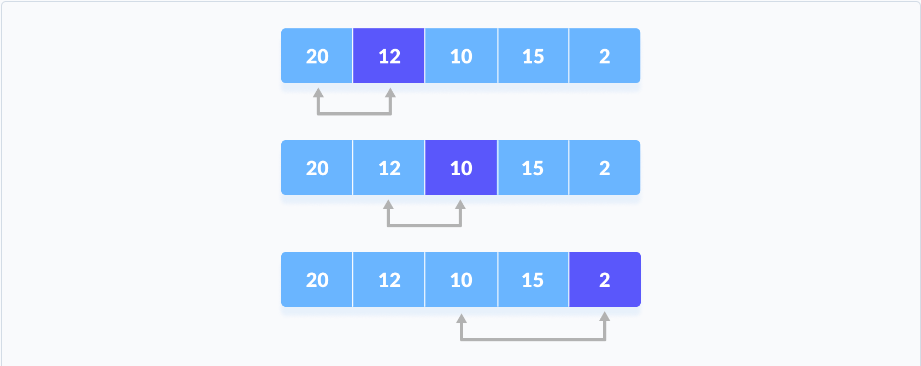 Compare minimum with the remaining elements
Compare minimum with the remaining elements - After each iteration,
minimumis placed in the front of the unsorted list. Swap the first with minimum
Swap the first with minimum - For each iteration, indexing starts from the first unsorted element. Step 1 to 3 are repeated until
all the elements are placed at their correct positions.
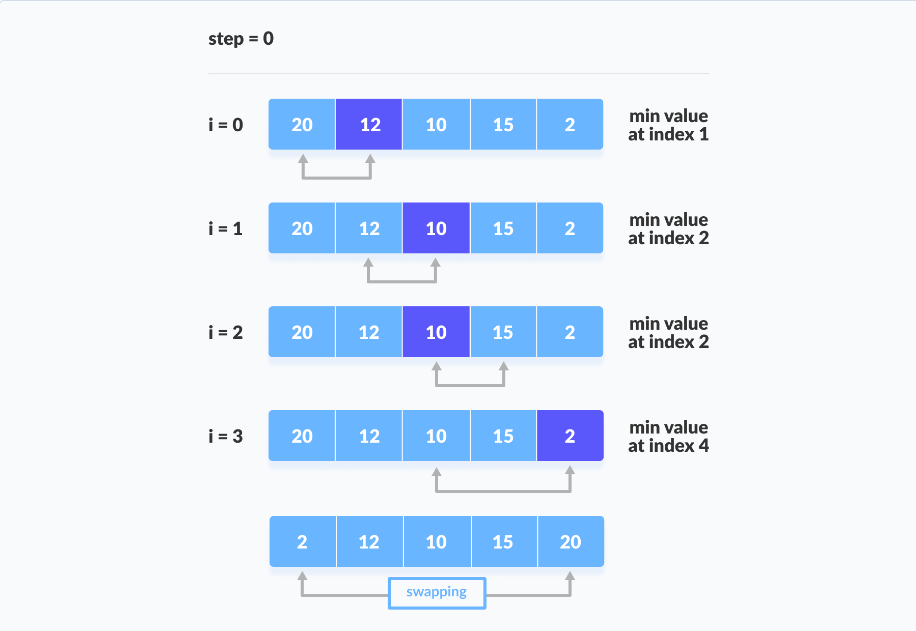 The first iteration
The first iteration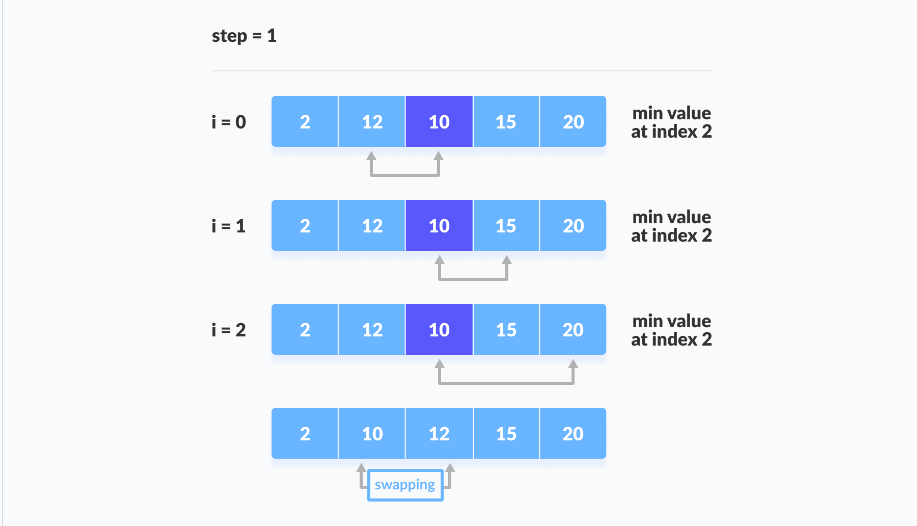 The second iteration
The second iteration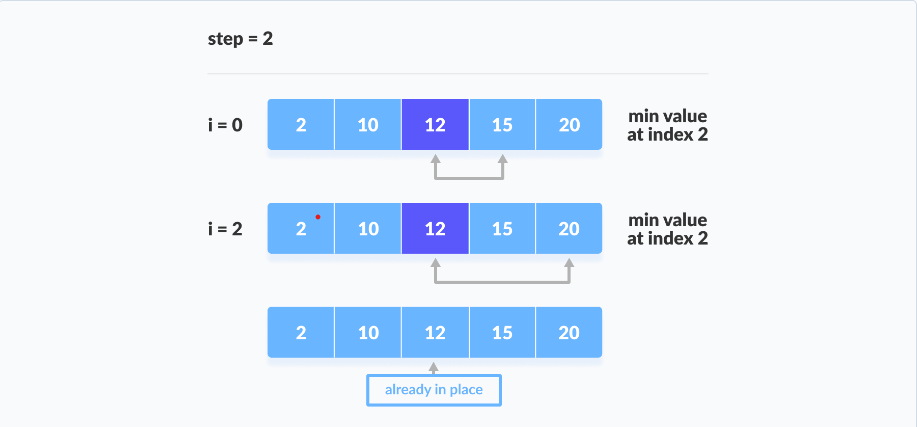 The third iteration
The third iteration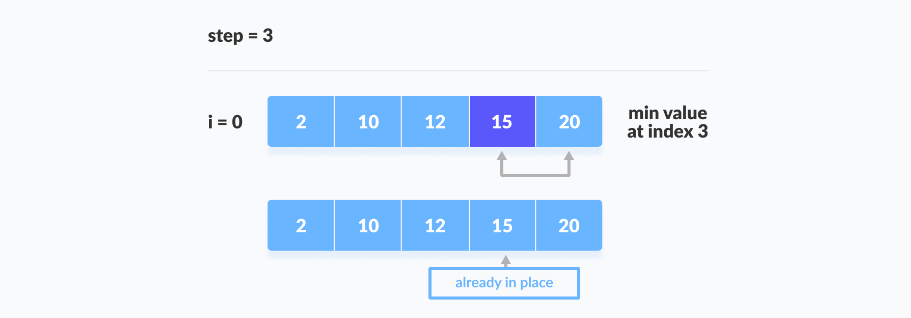 The fourth iteration
The fourth iteration
Selection Sort Algorithm
selectionSort(array, size)
repeat (size - 1) times
set the first unsorted element as the minimum
for each of the unsorted elements
if element < currentMinimum
set element as new minimum
swap minimum with first unsorted position
end selectionSortSelection Sort Code in Python
# Selection sort in Python
def selectionSort(array, size):
for step in range(size):
min_idx = step
for i in range(step + 1, size):
# to sort in descending order, change > to < in this line
# select the minimum element in each loop
if array[i] < array[min_idx]:
min_idx = i
# put min at the correct position
(array[step], array[min_idx]) = (array[min_idx], array[step])
data = [-2, 45, 0, 11, -9]
size = len(data)
selectionSort(data, size)
print('Sorted Array in Ascending Order:')
print(data)
Selection Sort Complexity
| Time Complexity | |
|---|---|
| Best | O(n2) |
| Worst | O(n2) |
| Average | O(n2) |
| Space Complexity | O(1) |
| Stability | No |
| Cycle | Number of Comparison |
|---|---|
| 1st | (n-1) |
| 2nd | (n-2) |
| 3rd | (n-3) |
| ... | ... |
| last | 1 |
Number of comparisons: (n - 1) + (n - 2) + (n - 3) + ..... + 1 = n(n - 1) / 2 nearly
equals to n2.
Complexity = O(n2)
Also, we can analyze the complexity by simply observing the number of loops. There are 2 loops so the
complexity is n*n = n2.
Time Complexities:
- Worst Case Complexity:
O(n2)
If we want to sort in ascending order and the array is in descending order then, the worst case occurs. - Best Case Complexity:
O(n2)
It occurs when the array is already sorted - Average Case Complexity:
O(n2)
It occurs when the elements of the array are in jumbled order (neither ascending nor descending).
The time complexity of the selection sort is the same in all cases. At every step, you have to find the minimum element and put it in the right place. The minimum element is not known until the end of the array is not reached.
Space Complexity:
Space complexity is O(1) because an extra variable temp is used.
Selection Sort Applications
The selection sort is used when
- a small list is to be sorted
- cost of swapping does not matter
- checking of all the elements is compulsory
- cost of writing to a memory matters like in flash memory (number of writes/swaps is
O(n)as compared toO(n2)of bubble sort)
